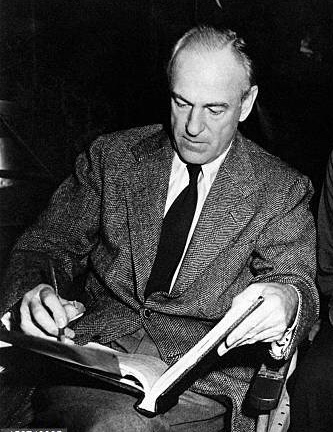
Sam Wood
Birthplace – Philadelphia, Pennsylvania, USA
Following a two-year apprenticeship under Cecil B. DeMille as assistant director, Samuel Grosvenor Wood had the good fortune to have assigned to him two of the biggest stars at Paramount during their heyday: Wallace Reid (between 1919 and 1920) and Gloria Swanson (from 1921 to 1923). By the time his seven-year contract with Paramount expired, the former real estate dealer had established himself as one of Hollywood’s most reliable (if not individualistic) feature directors. Not bad for a former real estate broker and small-time theatrical thesp. In 1927, Wood joined MGM and remained under contract there until 1939. During this tenure he was very much in sync with the studio’s prevalent style of production, reliably turning out between two and three films a year (of which the majority were routine subjects).
Most of his films in the 1920s were standard fare and it was not until he directed two gems with The Marx Brothers, A Night at the Opera (1935) and A Day at the Races (1937) that his career picked up again. Looking at the finished product it is difficult to reconcile this to Groucho Marx finding Wood “rigid and humorless”. Maybe, this assessment was due to Wood being vociferously right-wing in his personal views which would not have sat well with the famous comedian. His testimonies in 1947 before the House Un-American Activities Committee certainly gained Wood more enemies than friends within the industry.
Regardless of his personality or his habitually having to shoot each scene twenty times over, Wood turned out some very powerful dramatic films during the last ten years of his life, beginning with Goodbye, Mr. Chips (1939). This popular melodrama earned him his first Academy Award nomination. At RKO, he coaxed an Oscar-winning performance out of Ginger Rogers (and was again nominated himself) for Kitty Foyle (1940). Ronald Reagan gave, arguably, his best performance in Kings Row (1942) under Wood’s direction. His most expensive (and longest, at 170 minutes) assignment took him back to Paramount. This was Ernest Hemingway’s Spanish Civil War drama For Whom the Bell Tolls (1943), bought for $150,000 (De Mille was originally slated as director). In spite of editorial incongruities and the relatively uneven pace, the picture turned out to be the biggest (and last) hit of Wood’s career.
Sam Wood died of a heart attack on September 22 1949. He has a star on the Walk of Fame on Hollywood Boulevard.





